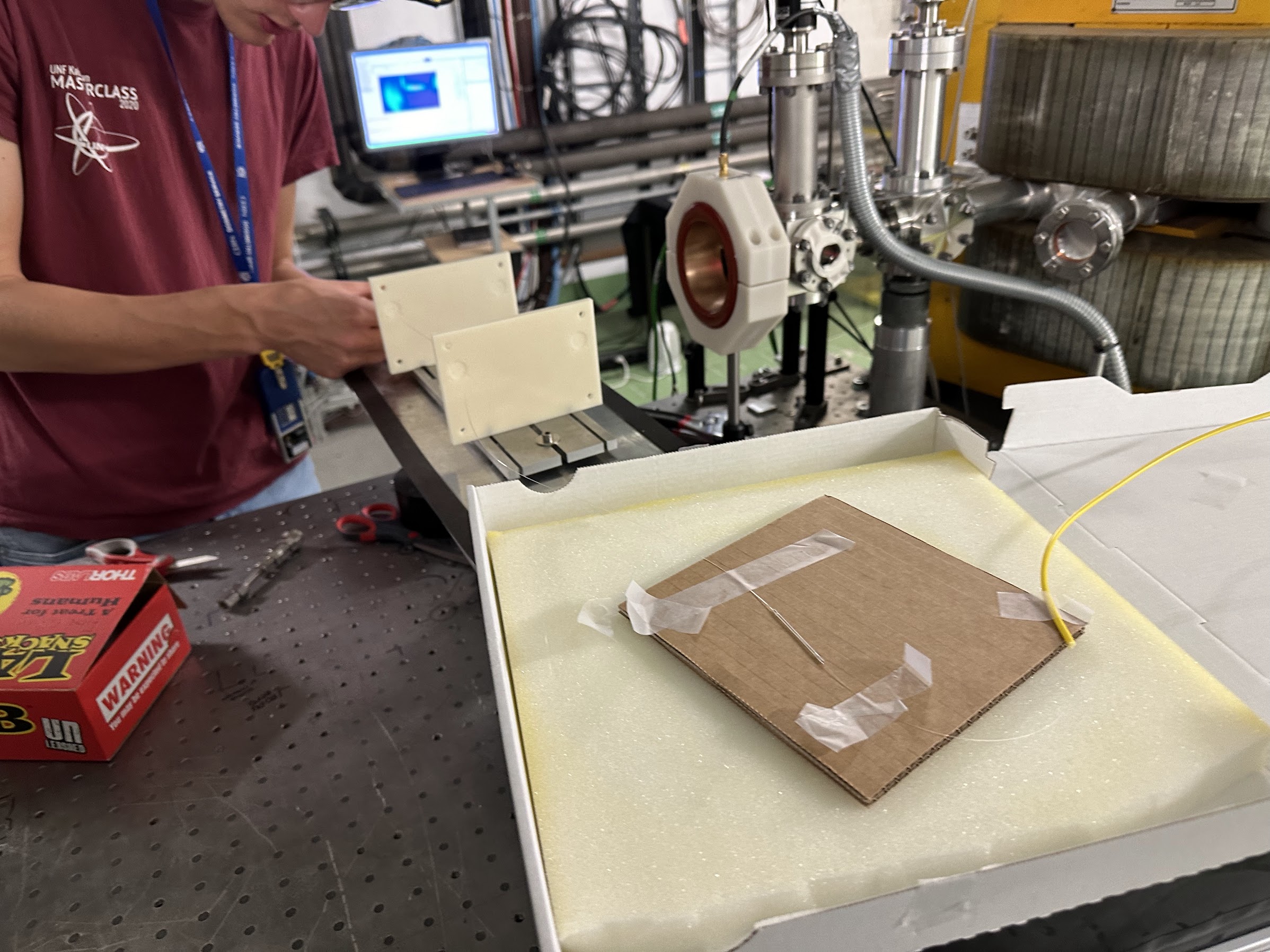06 OCTOBER 2025 | Kristiane Bernhard-Novotny

A slender glass fibre no thicker than a human hair placed across a particle beam could transform the way scientists monitor beams in one of CERN’s busiest regions: the North Area, home to many experiments that rely on intense particle beams coming from the Super Proton Synchrotron.
Measuring these powerful beams reliably is a constant challenge. As part of the North Area Consolidation (NA-CONS) project, researchers are exploring new tools that can withstand the extreme radiation of this environment. This brought together a team focusing on beam diagnostics for CERN’s experiments and researchers working on medical applications such as FLASH radiotherapy. FLASH delivers radiation doses at ultra-high rates and shows great promise in cancer treatment, but its extreme beam conditions also demand new kinds of monitoring tools. By linking accelerator expertise with medical research, the same technology being tested for CERN’s North Area could one day support the safe delivery of FLASH therapy to patients.
One promising candidate is the hollow-core optical fibre. Unlike conventional fibres, which guide light through solid glass, these fibres are mostly empty inside, but have a microstructure design that guides light through resonance–antiresonance effects on the electromagnetic field. By filling them with a scintillating gas - a gas that emits tiny flashes of light when struck by particles - scientists can create a simple yet powerful radiation sensor.
The collaboration put the concept to the test at CERN’s various test facilities and accelerators, such as CLEAR in 2024 and 2025. They exposed the fibre, filled with an argon–nitrogen mixture, to an electron beam and connected it to a silicon photomultiplier, a sensor that can detect single photons. Each time the beam passed through, the gas lit up, and the fibre carried that signal to the detector.
The results presented at this year’s International Beam Instrumentation Conference were striking: the fibre’s measurements of the beam profile closely matched those from a traditional YAG screen, a crystal that glows when struck by particles. Even after receiving a radiation dose high enough to damage many instruments, the fibre showed no sign of performance loss.
First results are encouraging, but further work is planned: improving the connection between fibre and detector, testing sealed fibres pre-filled with gas, and studying their long-term radiation hardness.
“This is just the beginning,” says NA-CONS member Inaki Ortega Ruiz, who leads the beam instrumentation consolidation of the secondary areas. “There are improvements to be made, but the first results are very promising.”
